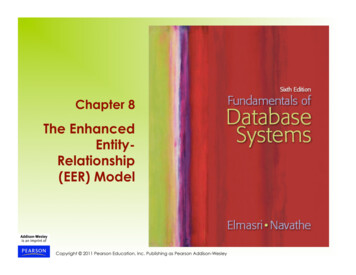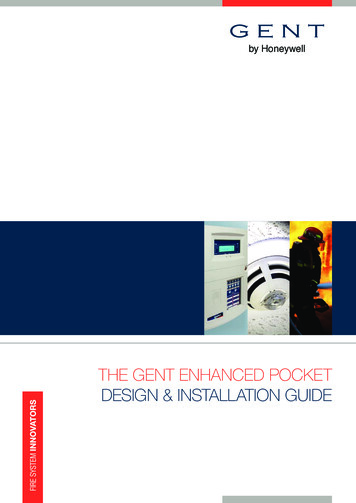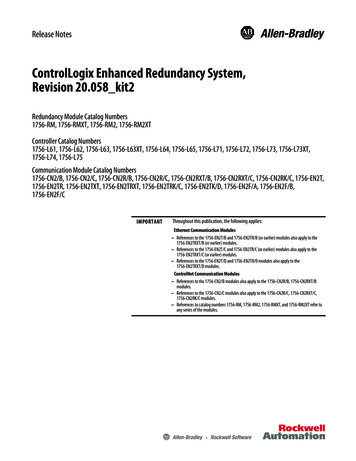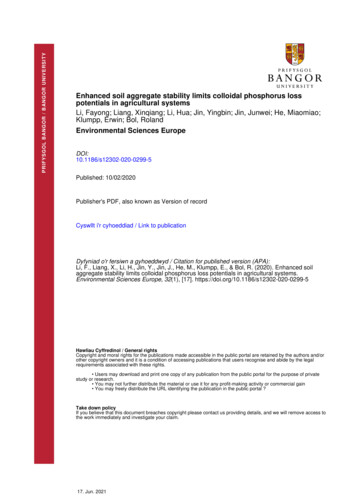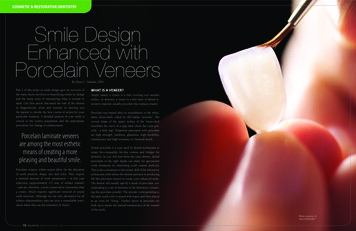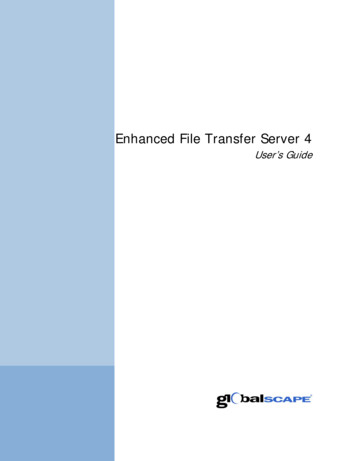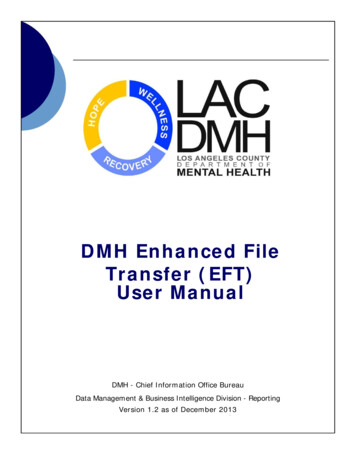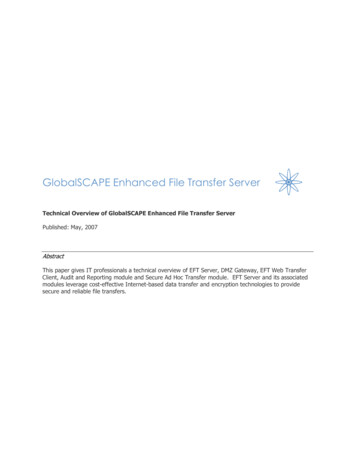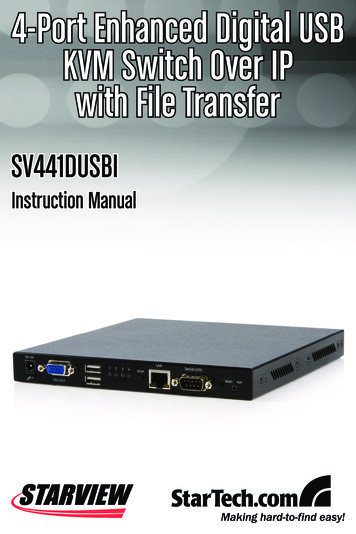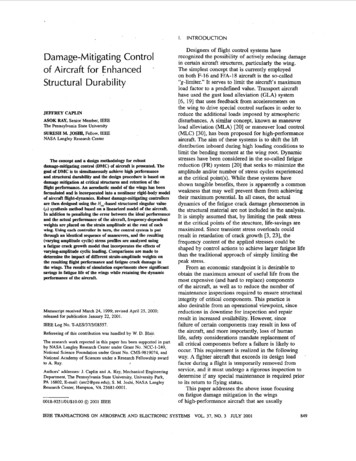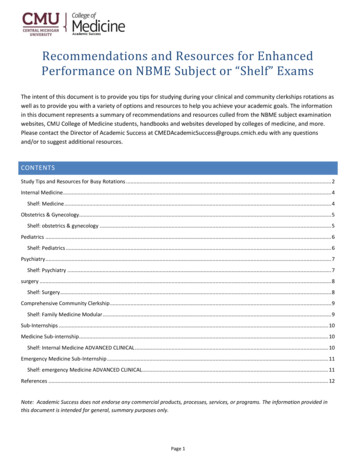
Transcription
Recommendations and Resources for EnhancedPerformance on NBME Subject or “Shelf” ExamsThe intent of this document is to provide you tips for studying during your clinical and community clerkships rotations aswell as to provide you with a variety of options and resources to help you achieve your academic goals. The informationin this document represents a summary of recommendations and resources culled from the NBME subject examinationwebsites, CMU College of Medicine students, handbooks and websites developed by colleges of medicine, and more.Please contact the Director of Academic Success at CMEDAcademicSuccess@groups.cmich.edu with any questionsand/or to suggest additional resources.CONTENTSStudy Tips and Resources for Busy Rotations . 2Internal Medicine . 4Shelf: Medicine . 4Obstetrics & Gynecology. 5Shelf: obstetrics & gynecology . 5Pediatrics . 6Shelf: Pediatrics . 6Psychiatry . 7Shelf: Psychiatry . 7surgery . 8Shelf: Surgery . 8Comprehensive Community Clerkship . 9Shelf: Family Medicine Modular . 9Sub-Internships . 10Medicine Sub-internship . 10Shelf: Internal Medicine ADVANCED CLINICAL . 10Emergency Medicine Sub-Internship . 11Shelf: emergency Medicine ADVANCED CLINICAL. 11References . 12Note: Academic Success does not endorse any commercial products, processes, services, or programs. The information provided inthis document is intended for general, summary purposes only.Page 1
STUDY TIPS AND RESOURCES FOR BUSY ROTATIONSTo assist you in meeting your goals for shelf exam scores, consider the recommendations below:1. Understand how you will be assessed.a. IMPORTANT: READ THE COURSE SYLLABUS IN DETAIL FOR EACH ROTATION. ASK FOR GUIDANCE RELATEDTO UTILIZATION OF REQUIRED AND RECOMMENDED RESOURCES, AS RELATED TO SHELF EXAMS, IFNEEDED.b. Understand the exam format. Visit NBME Subject Examinations to view the content outline for your specificexam. You can also preview and test yourself on sample items contained within the NBME SubjectExamination’s Content Outlines and Sample Items document. Within this document, you’ll findapproximately 20 sample questions and an answer key.2. Begin review for the shelf exam on the first day of rotation.a. While it may be tempting to delay the start of your preparation – don’t. You may find you need additionaltime to review the material and study it effectively.b. Be proactive in asking for learning or study strategy support from your peers, Clerkship Directors, OSA, orAcademic Success, as applicable.3. Create a flexible study plan utilizing smaller blocks of time for study activities.a. Create a plan that allows you to review all concepts identified in the shelf exam content outline.b. Create a regular time daily for at least one or more of the following: reading, making notes or study tools,self-testing, or reviewing questions.c. Organize your study plan to include time to revisit notes and work randomized qbank blocks of previouslystudied concepts.d. Most experts and medical student recommend working an average of 20 – 30 questions a day. Manymedical student utilized UWorld for Step 2 CK questions alongside other rotation resources and questionsources/banks.e. Revisit the Step 1 Method book, A Step by Step Guide to Success on the USMLE Step 1 Exam, specificallychapters 4, 5, and 6, which review strategies for working questions and test taking that are transferrable toshelf and Step 2 style questions.f. Schedule or simulate a practice exam halfway through your clerkship rotation to identify strengths andweaknesses and to help you refine your study plan.g. Be ready to break down your study plans into smaller chunks of time (e.g., 15 – 30 minutes).h. Implement the Pomodoro Technique to take advantage of 25 – 35 minute blocks of time.i. When you are pressed for time, work on a few Qbank questions or use patient encounters as studyopportunities.j. Download or carry copies of reading material (e.g., chapters or articles).k. Experiment with online flashcard programs and/or work questions on your phone.l. Take advantage of down time and/or combine activities (e.g., listen to a podcast on content or reviewflashcards, while walking or waiting for rounds).Page 2
4. Reflect on every patient a learning and study opportunity.a. Read actively about your current patients. For example, ask yourself the questions below, as applicable:i. What are the symptoms of the disease?ii. What are the signs of the disease?iii. What is the differential diagnosis?iv. How are those diagnoses differentiated from one another?v. How do you work-up or evaluate the disease?vi. What test(s) are available to confirm the diagnosis?vii. What are the treatment options? First step? Next step?viii. What is the prognosis?ix. What is the pathogenesis?b. During rounds or whenever possible, ask questions (e.g., Why this drug as opposed to X? Why did youperform or order this exam in this situation? Can you explain why you are doing this?). Alternatively, askyourself, “How might this patient case be written as an exam question?5. Enhance your test-taking strategies.a. Stay positive. Studies have shown that student performance on NBME subject examinations improves withincreasing clerkship experiences.a. During the exam, read the question before the vignette. This will help you focus on relevant information inthe vignette (Desai & Katta, 2007).b. Pace yourself during the exam and manage your time. If you are spending too much time on one question,skip it and come back to it. If you’re still not sure, make an educated guess and then move on. Try to avoidbecoming emotionally engaged or frustrated.ADDITIONAL RESOURCES NBME Subject Examinations. (Visit this website for access to content outlines for “shelf” or subject examinations inthe clinical science disciplines and more.)Subject Examinations Content Outlines and Sample Items by the NBME (2016). (Visit this guide for information andsample questions for basic sciences, clinical sciences, advanced clinicals and comprehensive examinations.)Studying for Third Year NBME Shelf Exams by Ben White (This blog, updated in 2018, offers recommendations forresources and question banks.)General Study Tips from Students and Professors, Albert Einstein College of Medicine (These study tips providerecommendations for resources, qbanks, etc., for each clerkship rotation.)Med School Tutors offers a series of blogs focused on different shelf exams. Visit Med School Tutors to access.Don’t Fall off the Shelf: Balancing Third Year Rotations with Exam Studying by Nick Lunig. (This blog provides somebasic tips for thriving during your rotations, including creating a flexible schedule, identifying weekly tasks,identifying resources, and when to leave a resource.)Page 3
INTERNAL MEDICINESHELF: MEDICINE The exam will be the Clinical Science: Medicine examYou can find sample items here.There are NBME self-assessments for this shelf exam (medicine) available, if you wanted to experiment with apractice test. There is one available for the Medicine shelf. You can order the practice exam just like you did forStep 1 through the NBME Self-Assessment site: l. Thesepractice tests are 50 items and all forms provide expanded feedback.IMPORTANT: PLEASE REVIEW INTERNAL MEDICINE CLERKSHIP REQUIRED AND RECOMMENDED READINGMATERIALS IN THE SYLLABUS.BOOKS RECOMMENDED BY MEDICAL STUDENTS Current Diagnosis and Treatment in Medicine by LangeMaster the Boards for Step 2Pocket Medicine by Massachusetts General HospitalSTUDENT TIP: Utilizing STEP UP TOMEDICINE, annotate all IM questionsand carefully review cardio pulm andrenal content.QBANKS AND PRACTICE TESTS Board Vitals, available through the CMU CoM Medical Library ServicesCase Files, Internal Medicine – LangeIM Essentials: A Medical Knowledge Self-Assessment Program (MKSAP) for Students Questions, Editors: Philip A.Masters, MD, FACP, Senior Physician Educator, American College of Physicians, Editor-in-Chief, be sure to orderthe student version, not resident version, work to complete a minimum of 10 per night.USMLE Easy, use “Institutional” sign up, available through the CMU CoM Medical Library Serviceso Select USMLE Easy Step 2 CK Create your own quiz create practice or test select “Traditional” tab Internal MedicineUWorld: Review all IM questionsRESOURCES Access MedicineChest X-rayDiagnosaurusEKGInternal Medicine Clerkship Review by Emily Ramahi, UT Health Science Center School of Medicine (video andPPT)MedscapeOnlineMedEdUp to DatePage 4
STUDY STRATEGIES How to Study for the NBME Internal Medicine Shelf Exam (2013)What are the three best resources available for Internal Medicine shelf Exam Prep? (2014)OBSTETRICS & GYNECOLOGYSHELF: OBSTETRICS & GYNECOLOGY The exam will be the Clinical Science: Obstetrics & GynecologyYou can find sample items here.There are NBME self-assessments for this shelf exam available, if you wanted to experiment with a practice test.There is one available for the Ob/Gyn shelf. You can order the practice exam just like you did for Step 1 throughthe NBME Self-Assessment site: l. These practice testsare 50 items and all forms provide expanded feedback.IMPORTANT: REVIEW OBSTETRICS & GYNECOLOGY CLERKSHIP REQUIRED AND RECOMMENDED READINGMATERIALS IN THE SYLLABUS.BOOKS RECOMMENDED BY MEDICAL STUDENTS Blue PrintsFirst Aid for OB/GYN ClerkshipMaster the Boards Step 3QBANKS AND PRACTICE TESTS APGO questions, if you miss more than 70% in a given set, repeat the set again.Board Vitals, available through the CMU CoM Medical Library ServicesUSMLE Easy, use “Institutional” sign up, available through the CMU CoM Medical Library Serviceso Select USMLE Easy Step 2 CK Create your own quiz create practice or test select “Traditional” tab Gynecology, ObstetricsUWorld: Review Ob/GYN questions twice, if possibleRESOURCES OnlineMedEdSTUDY STRATEGIES Know Thy Shelf: OB/GYN: Blog by Med School Tutors which offers tips, including knowing foundational materialPage 5
PEDIATRICSSHELF: PEDIATRICS The exam will be the Clinical Science: PediatricsYou can find sample items here.There are NBME self-assessments for this shelf exam available, if you wanted to experiment with a practice test.There is one available for the Pediatrics shelf. You can order the practice exam just like you did for Step 1through the NBME Self-Assessment site: l . Thesepractice tests are 50 items and all forms provide expanded feedback.IMPORTANT: REVIEW PEDICATRICS CLERKSHIP REQUIRED AND RECOMMENDED READING MATERIALS INTHE SYLLABUS.BOOKS RECOMMENDED BY MEDICAL STUDENTS BRS Case Files Pediatrics Master the Boards Step 2 Pediatric BlueprintsQBANKS AND PRACTICE T
There are NBME self-assessments for this shelf exam available, if you wanted to experiment with a practice test. There is one available for the Psychiatry shelf.

